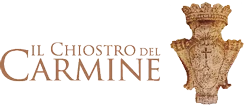Convent
Since the beginning the building was used as a Convent of the barefoot Monks called Carmelitani, this group of beggars aroused few years before in the Holy Land. During the last seven centuries the building has always been lived by the Carmelita barefoot Monks, except for few historical moments when The Granducato of Toscana first, Napoleon Bonaparte then, followed by the birth of the Italian Kingdom in the 1860s, took the building away from the Monks. Every time, after each invasion, the Fathers reconquered the convent where they were able to maintain their religious activity. Next to the convent, there is Saint Nicolo Church of the XII century. Inside it is possible to admire beautiful works of art such as paintings of Alessandro Casolani, Franceso Vanni and the image of Madonna dei Mantellini,this one was made by a painter during te second century known as Master of the S.S Cosma and Damiano. The great board by Domenico Beccafumi that represents Saint Michel chasing away the wild angels, it is considered one of the work of art of this painter. Below this altar, on a side, there is also the grave and the body of Franco Lippi, a carmelita saint which died at the end of the XIII century but still well known in the city also caused by his unique personal life. The Saint lived long and he died in one of the cell of the convent, today restored to be one of our guest room. On the side of the church there still are traces of the ancient porch that used to lead at the convent.


